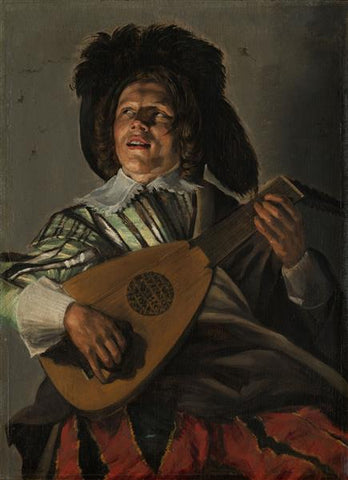During the Dutch Golden Age of art in the 17th century, Judith Leyster emerged as a rare talent among the Dutch Masters. Born in Haarlem in 1609, Leyster's artistic journey is a testament to her resilience and skill in a male-dominated field. Despite her early recognition, including her admission to the prestigious Haarlem Guild of St. Luke, Leyster's work was often misattributed to other artists like Frans Hals or her husband, Jan Miense Molenaer. This blog post, set against the backdrop of the Dutch Baroque painting era, explores Leyster's life, her self-portrait at the National Gallery of Art, and her struggle for recognition in a society that often overlooked women artists.Rebecca Howland discusses her history and several of her artworks on our virtual Dutch Masters Art Tour.
Leyster's artistic prowess was evident in her portraits and genre paintings, often depicting subjects engaged in household chores or leisure activities. Her marriage to fellow artist Jan Miense Molenaer in 1636 marked a turning point, as she ceased producing artwork under her own name. The misattribution of her work, a common plight for female artists of the time, led to her name being lost for nearly 200 years. It was only in the 19th century that her signature was discovered beneath Frans Hals' on a painting, leading to the reclamation of at least seven other works previously hidden under a man's name. This discovery highlights the challenges of art misattribution and the societal and legal barriers faced by women in art history.
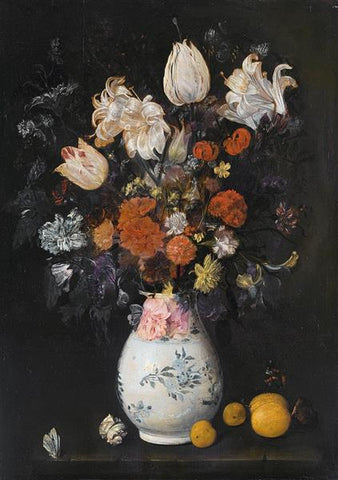
Flowers in a Vase by Judith Leyster c. 1654
Leyster's legacy extends beyond her artistic contributions; she symbolizes the struggle and eventual recognition of women in the art world. Her story raises important questions about the balance of family and career for women artists, the complexities of estate planning and contracts, and the attribution of collaborative works. Judith Leyster is not just a figure in the history of Dutch Masters but a beacon for the recognition of female artists and their contributions to the world of art.
A Few Quick Facts About Judith Leyster
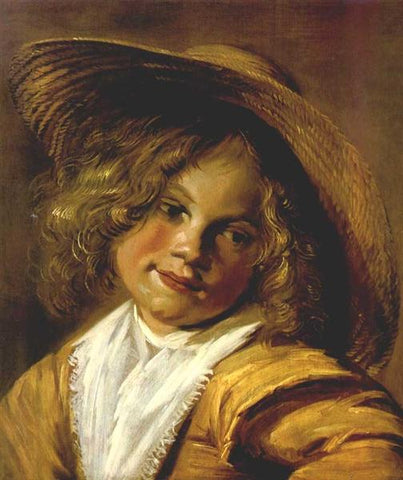
Judith Leyster, born in Haarlem in 1609, showcased exceptional artistic talent early in her life. Her skills earned her the extraordinary honor of being one of only two women admitted to the esteemed Haarlem Guild of St. Luke in 1633, a significant achievement in the 17th-century art world. Despite her accomplishments, the specifics of her early artistic training are not well-documented.
Leyster went on to establish her own art studio, where she played a pivotal role in guiding apprentices and assistants. Her artistic repertoire predominantly featured portraits and genre paintings, capturing scenes of daily life, from household chores to leisure activities like playing musical instruments.
In 1636, a few years following her art education, Leyster married Jan Miense Molenaer, who was also an accomplished artist. Their marriage led to a notable change in her professional life. Leyster had five children with Molenaer, and as she embraced her role as a mother and wife, she gradually stopped producing artwork under her own name. This shift in her career trajectory highlights the societal expectations and challenges that women artists faced during that era, often having to balance their personal lives with their professional aspirations.
How Judith Leyster's Name Was Lost for 200 Years
Despite stepping back from the public art scene, Judith Leyster continued to engage with her passion for painting during her personal time, even though she may not have completed full works independently during this period. Her husband, Jan Miense Molenaer, operated his own art studio, and it is highly probable that Leyster played a significant role in the creation of many pieces attributed to him. Her artistic influence, while not overtly acknowledged, likely permeated through Molenaer's works.
The dilemma of balancing family responsibilities with a professional career is a challenge that has persisted through the centuries, and Leyster's life exemplifies this enduring struggle. It is comforting, however, to imagine that she continued to paint sporadically, driven by her love for art rather than the pursuit of recognition or credit.
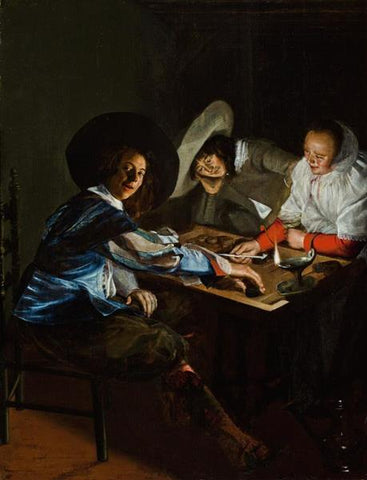
A Game of Tric Track by Judith Leyster 1631 courtesy Worcester Art Museum (WAM), Worcester, MA, UK
Leyster passed away in 1660 at the age of 50. She was laid to rest on a farm just outside her hometown of Haarlem. Tragically, her artistic legacy was largely unrecognized for nearly two centuries following her death. The inventory of her estate, which often referred to her paintings as the work of "the wife of Molenaer," may have played a role in the widespread misattribution of her art to her husband. This oversight in her lifetime highlights the historical challenges faced by women artists in claiming ownership and receiving acknowledgment for their creative contributions.
Judith Leyster Takes on Frans Hals
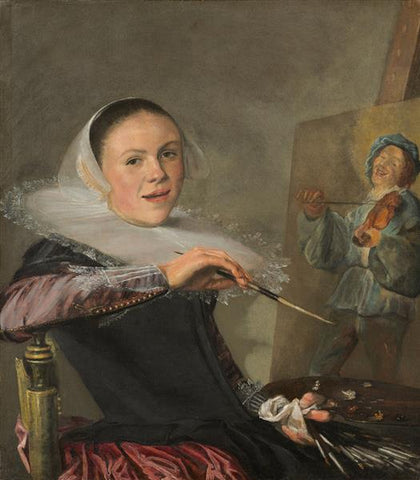
One of the most notable works of Judith Leyster is an informal self-portrait that showcases her mastery of wide brush strokes, a technique prevalent among many Dutch Masters of her time. This particular style in her self-portrait is reminiscent of the work of Frans Hals, who was renowned as one of the most influential painters in Haarlem during that period. Leyster's adoption of this style suggests that Hals' work had a significant impact on her artistic development, reflecting the interplay of influences among artists of the Dutch Golden Age.
Leyster's respect for Hals was evident, as she admired his impressive body of work and his status in the art community. However, her admiration did not deter her from asserting her rights as an artist. This was most notably seen in an incident where Hals recruited one of Leyster's assistants without her consent. In a bold move that highlighted her determination and respect for her professional boundaries, Leyster took legal action against Hals. She filed a formal complaint, standing up for her rights in a male-dominated industry.
The outcome of this dispute was complex. Hals was ordered to pay a fine for this infraction, yet he was permitted to retain the assistant he had poached. This incident underscores the challenges Leyster faced as a female artist in the 17th century, navigating professional relationships and asserting her authority in a predominantly male environment. Despite the mixed results of her legal challenge, Leyster's willingness to confront Hals demonstrates her remarkable courage and commitment to her professional integrity. Her actions in this dispute are not just a reflection of her personal strength but also an early instance of a woman artist advocating for her rights in the art world.
Art Misattribution Contributed by Society and Law
Judith Leyster's legacy extends far beyond her individual accomplishments as a female artist; she stands as a pioneering figure who paved the way for future generations of women in the arts. Her story is not just about her remarkable talent but also about the resilience and persistence in the face of societal norms that often rendered women invisible in the art world. The fact that a significant portion of her oeuvre was lost to history due to misattribution, only to be rediscovered and correctly attributed centuries after her death, speaks volumes about the challenges faced by female artists.
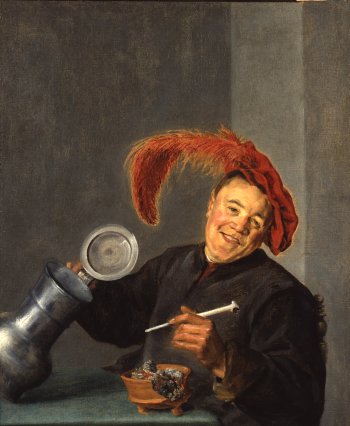
Jolly Toper by Judith Leyster c. 1629 courtesy Staatliche Museen zu Berlin, Berlin, Germany
Leyster's experience raises important questions about the broader historical narrative of art. It prompts us to consider how many other talented women may have been similarly overlooked, their works attributed to male contemporaries or lost in the annals of history. This realization underscores the need for a more inclusive and accurate representation of art history, recognizing the contributions of women artists who have long been marginalized.
Furthermore, Leyster's life story brings to light the complex interplay between professional aspirations and personal responsibilities that women artists have historically navigated. Balancing a career in art with family life, managing estate planning, and negotiating contracts in a male-dominated field are challenges that many female artists have faced. Leyster's situation also highlights the complexities involved in attributing collaborative works, especially in a time when women's contributions were often overshadowed or ignored.
In essence, Judith Leyster's journey is a testament to the enduring spirit of women artists. Her story is a call to re-examine and re-evaluate art history with a more equitable lens, recognizing and celebrating the contributions of women whose talents and efforts have been integral to the rich tapestry of the art world. Her legacy is a reminder of the importance of acknowledging and rectifying historical oversights, ensuring that the achievements of women artists are rightfully recognized and honored.
